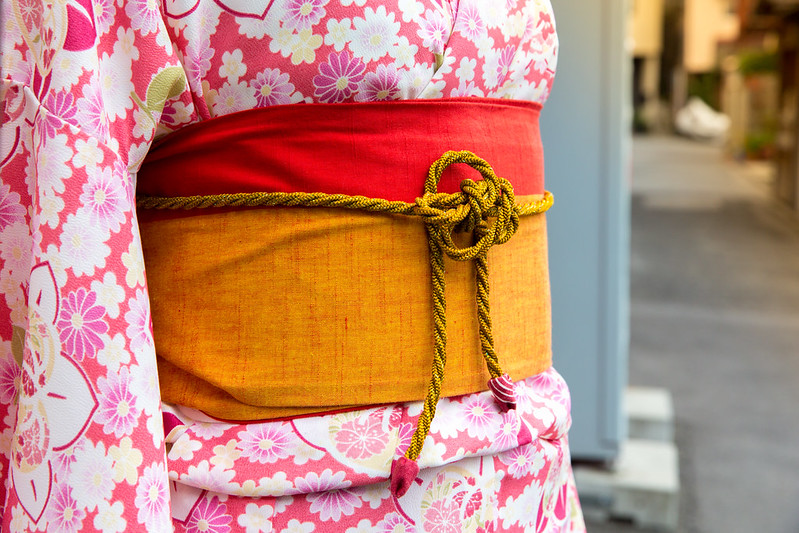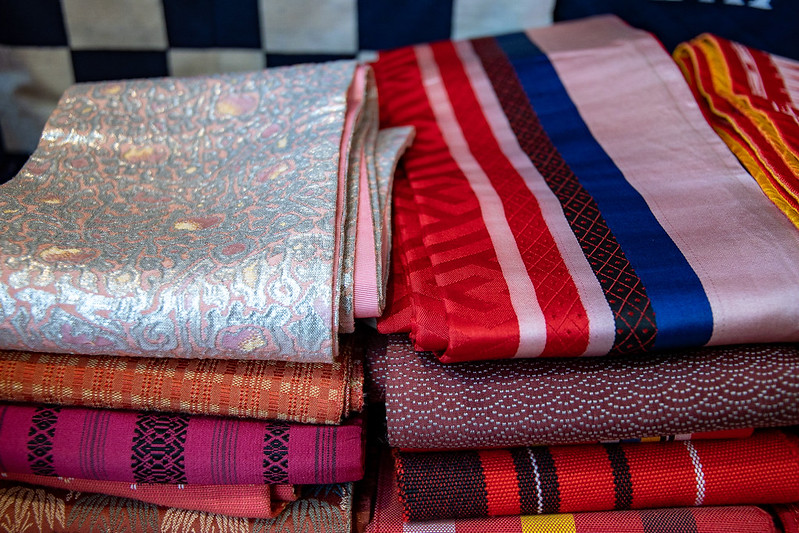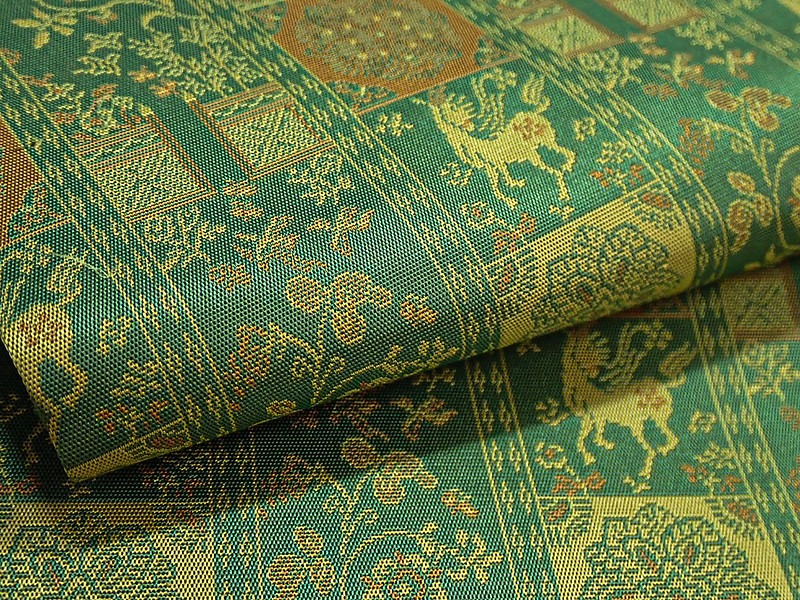
The Multifaceted Obi
An obi (帯, おび) or sash, is an important piece of the traditional Japanese kimono and the keikogi (conventional attire for martial arts). An obi is a sash that completes the whole clothing ensemble. Both men and women can wear an obi. Kimonos for men have a much narrower obi, around 3.9 in. wide, while a woman’s formal obi can be as wide as 12 in. and as long as 13 ft. The main purpose of an obi is to secure a kimono and keep it closed. But nowadays, obis for women’s kimonos are more extravagant and can rival a peacock’s feathers. They are made wider, more decorative , with under-sashes and ribbons, and there are several ways to tie knots.
Obis for women are usually made from brocade. Wider obis are for formal occasions, and narrow and simpler ones are for everyday use. A well-made obi can be even more expensive than the entire rest of the kimono outfit. It can be the most elaborate piece of the whole attire depending on the design and the material used.
Japanese silk fabric
Some examples of women’s obi:
Maru Obi (丸帯) –considered the most formal. It is usually made with both sides full of intricate patterns covering its full length. The maru obi was popular during the Meiji restoration and Taisho periods. It is seldom worn today, because it is very heavy and expensive, but it remains a favorite outfit for traditional Japanese weddings. The classic maru obi measures 13 in. wide, but narrower obis can be custom made. The elaborate patterns are often made of patterned tapestry or brocade and decorated with gold threads.
Fukuro obi (袋帯) -made by sewing or folding two pieces of cloth together. A fukuro obi is considered a great alternative to a maru obi for ceremonial wear. It is cheaper and lighter,and the back side can be made from more cost effective cloth while the front can still be crafted from brocade. The fukuro obi is usually 12 in. wide and can be as long as 15 in. It is hard to tell the difference between a maru obi and a fukuro obi.
Nagoya obi (名古屋帯) – developed by a seamstress from Nagoya in the Taisho era in the 1920s. Plainer and lighter than the maru or fukuro obi, it has a pre-folded portion and is stitched in half. The narrower part is wrapped around the waist, and the wider section is used to tie the bow. Maru and fukuro obis are tied with a double fold, while a Nagoya obi uses a single fold.
Video clip on how to tie a Fukuro obi:
